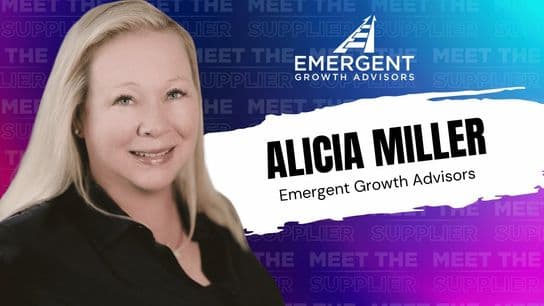Dairy Queen multi-unit franchisee Cary Albert and Saladworks multi-unit franchisee Nish Patel weigh in with personal advice about growing at different stages in their careers.
In the world of franchising, there are two very distinct categories of operators. There are single-unit owners and there are multi-unit owners. Deciding to make this leap is a big step that takes serious due diligence – huge considerations include operational capacity, finding the right real estate, hiring qualified staff, and having the financial bandwidth to do all this while not letting anything slip at your first location.
Whether big or small, multi-unit owners create their own business plans to run their units successfully while also remaining good franchisees that follow the system that corporate has laid out for them to be profitable. To gather insight, Nish Patel, a three-unit Saladworks franchisee and Cary Albert, a multi-brand, multi-unit franchisee with 25 Schlotzsky’s and Cinnabon locations in addition to seven DQ Grill & Chill restaurants, weighed in on opposite ends of the spectrum and offered tips to other franchisees considering multi-unit expansion.
Understand That You Must Work Extremely Hard To See Success
Patel was the general manager of a Saladworks location when it became available for purchase. However, that location also came with a second unit to purchase at the same time. Although he had hoped to expand quickly, he went from being a GM to owning two units immediately. It was a lot of responsibility right from the beginning and Patel had to work hard to manage the locations properly.
“I kind of learned as I went, and there was a lot of hard work, but I took a leap of faith when I took ownership of both locations,” Patel said.
Expect For Your Plans To Be Completely Disrupted
“For someone going from single-unit ownership to having multiple-units, every plan that you have will not go accordingly,” Patel said. “Your plans usually get disrupted by something, but it will eventually all turn out great if you put in the work.”
Before taking over the two Saladworks units, Patel had planned to have an existing manger remain at one restaurant to help ease his transition into ownership, but the manager ended up leaving. It made the shift to multi-unit franchise ownership more difficult, but it also forced Patel to hyper-focus on the unit-economics of both locations, which ultimately helped propel his business forward.
Train The Staff To Work Without You And Hold General Managers Responsible
Now with three locations across Pennsylvania and New Jersey, Patel operates more as a regional owner, and he stops into all three stores every day.
“I think it is key to get involved and work hard when you’re inside your restaurants, but as a multi-unit owner, you need to empower your staff to step up and take responsibility as well,” Patel said. “By teaching your employees how to properly operate a restaurant and deliver great customer service, they are able to keep up with the work when you’re not there.”
Furthermore, Patel explains that you need to hold your general managers responsible for labor, food costs, and restaurant efficiency in order to maintain profitability at the unit level.
“You have to provide guidance, training and ongoing support in order to continually improve operations and drive repeat guest traffic,” added Patel.
Add In Roles Within The Organization To Offer Support
Cary Albert, the largest Schlotzsky’s Deli and Cinnabon franchisee in the country, and DQ Grill and Chill multi-unit owner, believes that once you cross the four-unit threshold, it’s time to consider bringing on staff to help manage operations.
Albert and his wife initially split the work up when they only had a handful of locations, but to manage growth, they brought on a vice president of operations. That was only the beginning. Eventually they hired a district manager and added a controller to their accounting department, among other internal resources. At a dozen units, they brought in a director of catering, and grew that department to three employees.
“We started adding in all these layers that are active and passive roles within the organization, including many support roles that had to be managed,” Albert said. “You have to figure out how big do you really want to get and where does it make sense. Once we went past a dozen units, we decided that we might as well go to 50. Our goal is to be at 50 units by the end of 2018, so we have the next 32 months.”
Consider Investing In Real Estate
One of the ways Albert has been able to keep cash flow moving was by adopting a very real estate-centric model for growth.
“We actually became Schlotzsky’s franchisees in 1995. We grew to six units, but we didn’t own real estate,” Albert said. “In 2006, I was able to purchase the real estate, and eventually a retail center, so then we became landlords.”
Albert and his team look for ways to leverage real estate holdings, such as selling a lease back to a building to raise capital. His model is about being able to capitalize on a great opportunity, not only for a franchise location and for the business, but to capture a great piece of real estate by rolling the rent and loan into one monthly principal interest payment.
“This is basically a matter of accelerating your cash flow, having more cash flow monthly, and accelerating your expansion possibilities,” he adds. “With three upcoming openings in the next month, we're trying some unique things to open quickly and achieve our 50-unit goal.”













